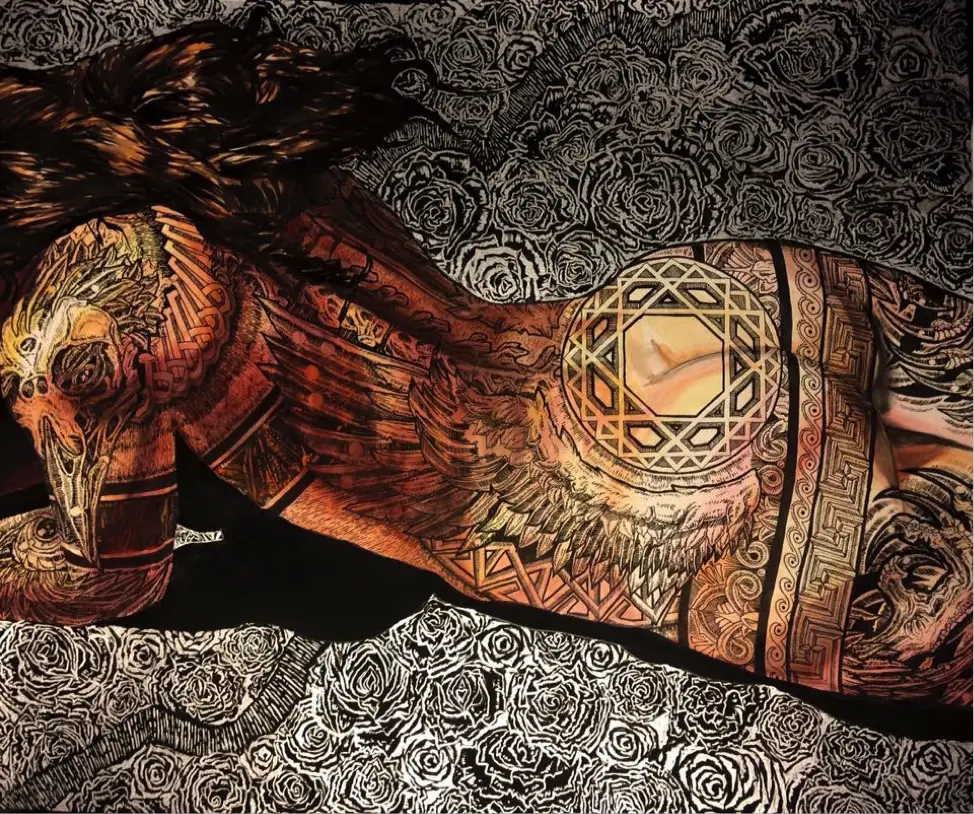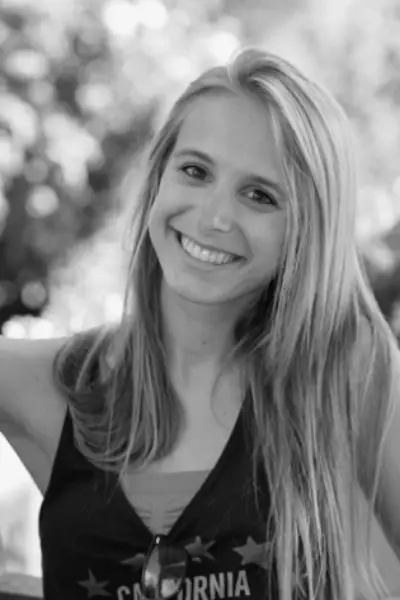An Interview with Artist Lee Herpy
On his dream project: “Pure batshit, high speed, burnt out, passionate insanity.”
By Olivia Buzzacco, Bowling Green State University
I was first introduced to Lee Herpy at the BFA Showcase at Bowling Green State University during the spring of 2015.
I happened to stumble across his artwork and quickly found myself mesmerized. His art was striking. The details he used in his paintings were overwhelming, the images so lifelike. I kept returning to his display over and over in the hour I had spent at the showcase. His portrayal of Napoleon Bonaparte stuck with me so much to the point that I snuck a photo of the painting and requested to be friends with Lee on Facebook. It took almost a year for us to actually talk to one another.
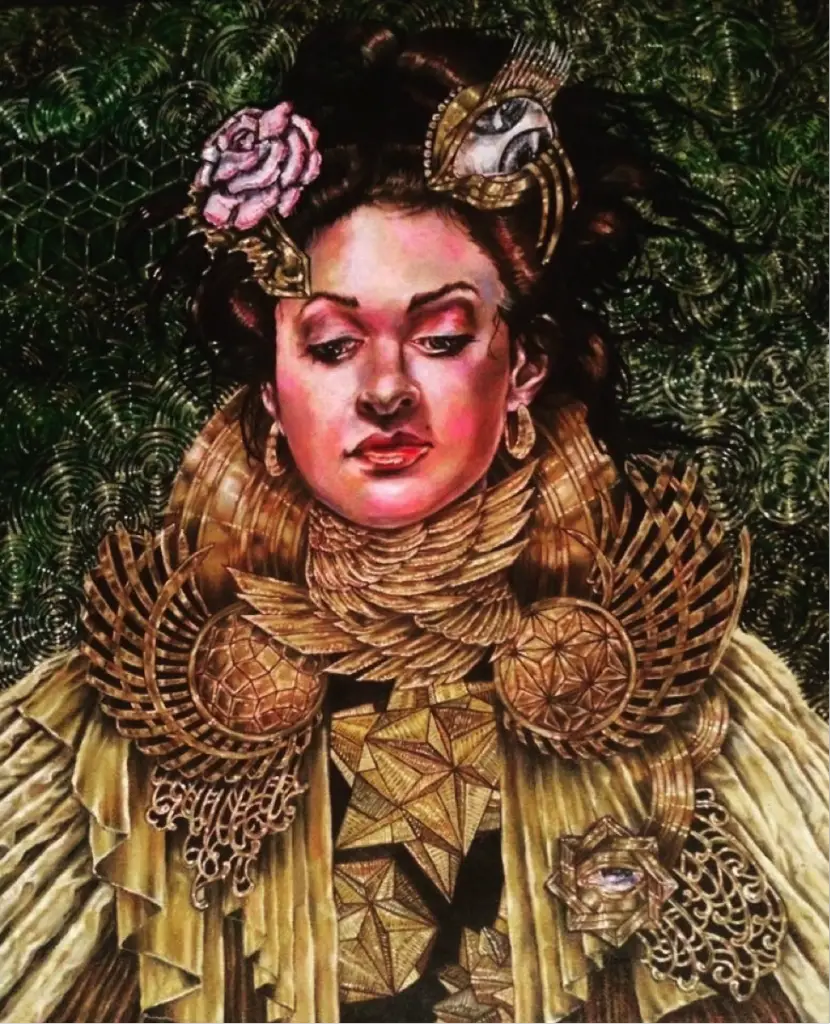
The first time I met Lee face-to-face, I was intimidated by his appearance. He came out of his car in a hockey jersey and a backwards hat, tattoos crawling up both of his arms. He quietly said hello and followed me into my apartment, carrying an impressionist painting of myself, based on a picture I took on Easter. We didn’t say much to one another; he’d stopped by to give my parents the painting they had commissioned.
I spent most of the time adoring the painting with my parents, avoiding eye contact with Lee because I was so shy. Later that day, my family went out for dinner and I found myself drunkenly texting Lee, since I now had the courage to strike up a conversation with him. I’ve been getting to know him ever since then and still find myself learning new things about him. He’s got stories and experiences to last a lifetime.
Lee Herpy was born in Ann Arbor, Michigan. He grew up in Howell, but moved to Byron, where he attended Byron Area High School. After graduating, he attended college at Bowling Green State University where he worked towards his BFA in painting. At 21, he was diagnosed with diabetic ketoacidosis, which caused his heart to stop and his kidneys to fail, an event that Lee says changed his spirituality and his thoughts on mortality.
After his recovery, Lee returned to Bowling Green and graduated with his BFA in 2015. He is currently working as a skilled tradesman, remodeling residential homes, as well as funding his art, which he spends his free time doing. All of his artwork can be seen on his Facebook page.
Of course, this short bio doesn’t do Lee justice. He is much more than a sheer 124 words. Lee describes himself as charismatic, driven, stubborn and “real odd,” which I can wholeheartedly agree with. He is not afraid to open up to anyone, and isn’t afraid to speak his mind.
We’ve bonded over serial killers and telling stories about our lives, and he clearly wins the gold medal for best stories and vast knowledge on so many subjects. An avid hockey fan, Lee once spent time discussing hockey terms with me, and if helping me understand hockey isn’t what true friendship is, I don’t know what is. As a bonus fact, Lee also owns around 178 jerseys from all sorts of hockey, baseball, football and basketball teams.
I recently talked with Lee about his passion for art and painting, and in turn he gave me eye-opening answers to my questions.
Q: Where do you draw your inspiration from?
A: As a child it was music. I grew up listening to Queen and Nirvana, the lighter and darker side of that form of art. I would say now literature and music have definitely made a significant impact on my work.
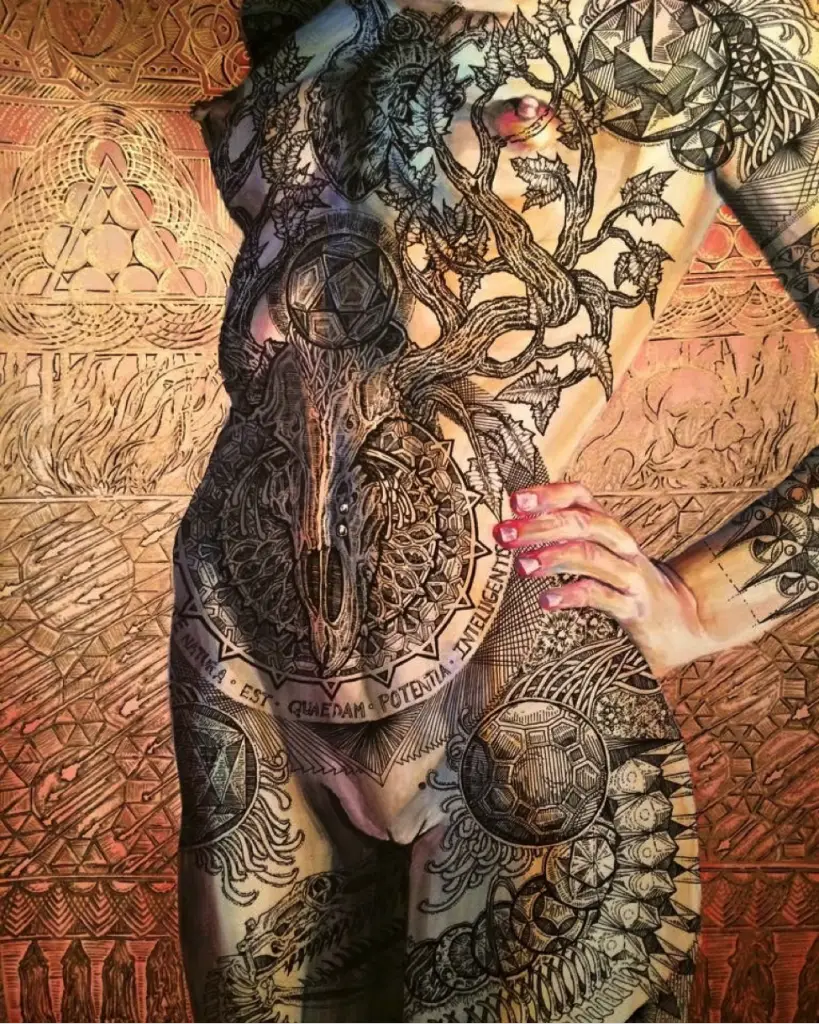
I love to explore the darker psyche of the human existence, spirituality, and animalistic nature. I believe it’s referred to as anima, and animus, by Carl Jung. They are the two anthropomorphic archetypes that make up our subconscious, and I’ve made it an obsession in my life, not just my work.
At various times experimentation has been a huge factor. Music has been a must. Bands such as Tool, Nine Inch Nails, and Queens of the Stone Age. Some books that have affected my paintings are “Heart of Darkness” by Joseph Conrad, and “Dune” by Frank Herbert. They challenge my core set of ethics, which I explore through paint.
Q: How do you get your ideas?
A: How I get my ideas has changed over the years. Admittedly when I was younger it was through drug-induced bizarre 3am blitz painting. More recently I let my personal relationships, mostly with lovers or dominant figures in my life, dictate my ideas.
I’ve also been starting to dive into sacred geometry and how it shapes events, but that in itself is a rabbit hole that will take years to crawl down into. Occasionally I will do the opposite. A random stranger will let me paint them and I’ll let my initial feelings on their form and mentality take me away into the piece. It makes the end result less predictable.
Q: What do you mean by “less predictable?”
A: Usually I have an end result of what I’m trying to accomplish with any given painting. When I add more unknown variables to my creative process, the end result is less likely to turn out how I pictured it. To me this is a very good thing. It lets me grow.
Q: Take me through your creation process.
A: I’d love to say my creation process is a strict routine, because I’m an obsessively detailed person, but it’s surprisingly random. The most stable component is photographing a model in a way that I want to explore, but the rest comes during the actual painting application. I’ll let the model and her form push me toward the more surreal aspects of the piece, such as body art, clothing, other materials such as gold flake or enamel. If I plan things too much, I become apathetic to the art. I usually paint late at night, I feel those hours have the right energy that my work will benefit from.
Q: Which piece was your biggest challenge?
A: “Nero” was definitely my most challenging piece. I needed a concept for my BFA thesis show, and if it wasn’t exhausting and fulfilling I feel like I would have chalked my five years in art school.
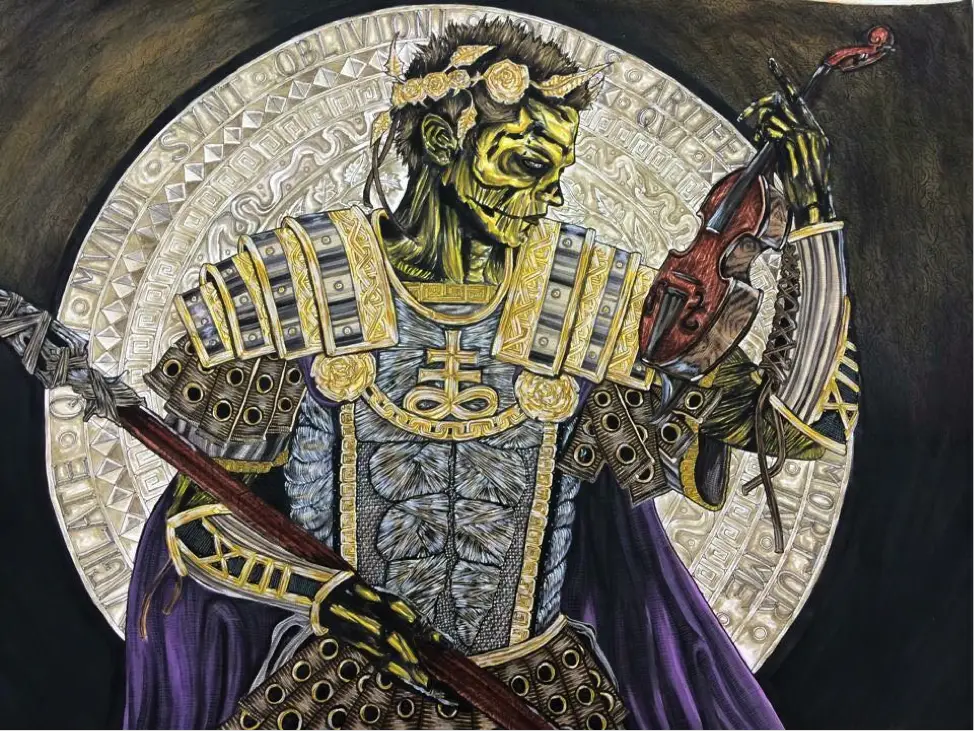
I went through a nasty break up, my parents were splitting and unfortunately my narcotic use was at its highest point. I needed do work on something cathartic and new. I needed to express the anger and hostility, but also breathe in something new, to revitalize.
The end result was “Nero.”
I felt he embodied the self-indulgent narcissism I wanted to rid myself of. “Nero” is the pivotal piece of my undergrad years. The whole process helped me work through some growing pains; I’m very proud of it.
Q: Can you talk more about how your work gets you through difficult points in your life?
A: It has always been a coping mechanism. I can channel all of my emotion into a painting. It’s getting rid of all the bad mojo and concentrating the negativity and morphing it into something positive. I’ve always been headstrong, and in the past I couldn’t cope with the downs of life very well, and the people closest to me undeservedly had to deal with my misguided anger. But over the years I’ve learned to redirect it into my art and use it to my benefit.
Q: What drew your into your stylistic choices?
A: I wouldn’t say anything in particular drew me into my style. I believe that my mind just has a certain way of seeing people and I paint it the way my mind is telling me to. It comes full circle with Carl Jung and his theories on the subconscious mind, how we suppress so much of it that we severely limit ourselves. I try and let the subconscious push and break my waking boundaries. I can try all day to paint something that would fall within the bounds of realism, but I’m not content until my mind’s eye distorts it.
Q: You’ve had people comment on your nude paintings, essentially not agreeing with them. What’s your usual response to this?
A: When people wrongly accuse me of sexism or some sort of perversion, which has happened a few times, I usually tell them these paintings are spiritual. Nothing about them is sexual or misguided. The human form is beautiful. The female form is art in itself. My art is the only thing I have 100 percent control over. I dictate what I create with no exceptions. If someone takes offense I respectfully suggest that they just pay no attention to my work, as is their right.
Q: What are you currently working on?
A: I’m working on three pieces right now currently. All different. One painting is a modern interpretation of the Hindu deity Kali. I find her fascinating. She is basically one half of Shiva, the vengeful, murderous half. What intrigues me is that one can view her as a warrior for the downtrodden and a redeemer as well. Duality is cool.
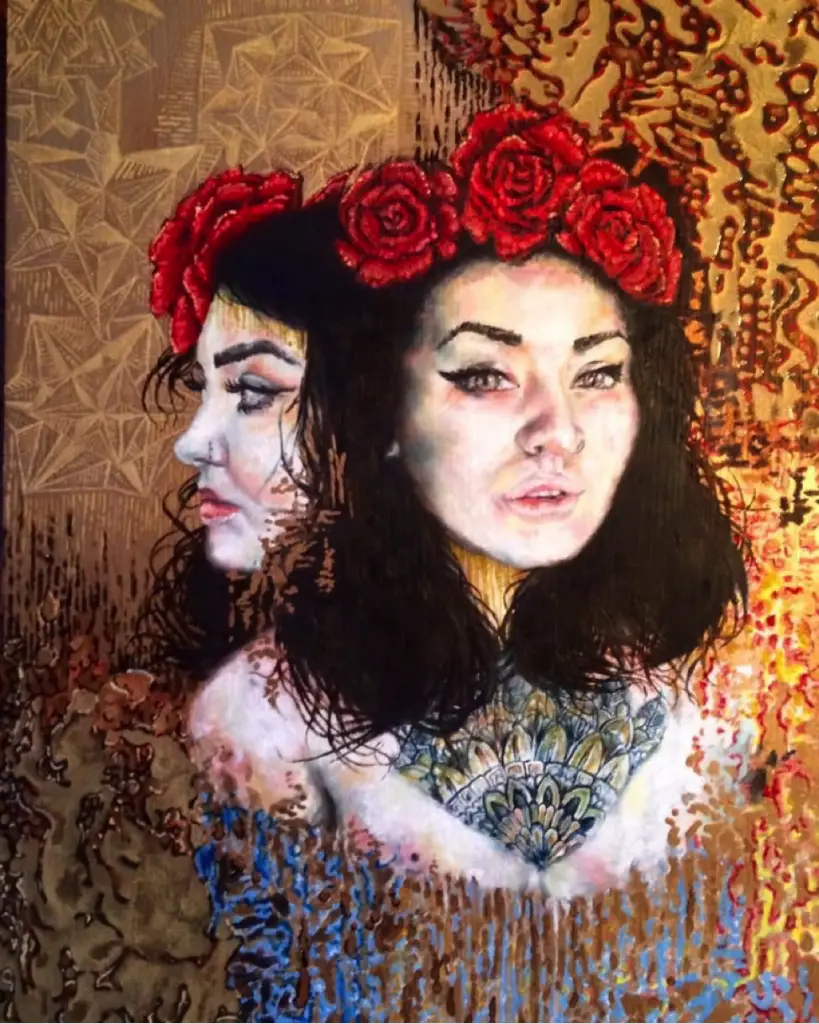
Another piece is of a model I’ve come to know as a friend. She came up with the pose, which I love, and I am surrounding her in jellyfish; the focal point is one with a skull inside of it. I’m more looking to experiment with that, no real set idea going into it.
The third is the most complex painting I’m working on, of a former lover, who I’ve thankfully had a sort of reunion with. She was very important to me and it was illogical to me that we fell off a few years back. The painting is a nude, and she is fully tattooed. The images on her skin are representations of memories made with her: love, loss, resentment and reconnection. She is a very close friend today and it’s brought back some happiness.
Q: Why do you do what you do?
A: I do what I do because it’s my driving force. I need to do it. If I don’t create something, anything, my existence is a downward spiral into lack of purpose. Even with my remodeling job I create to solve practical problems. I can’t express myself better in any other way than artistic expression. It’s like I’m prying open my chest for people to see, and to judge. It’s spiritual.
Q: Dream project?
A: My dream project is impractical really. I want to do a massive painting, all oil, of every person who has impacted my life in a significant way. I want to have those who I’ve loved and held close as well as those who have treated me like shit and abandoned me, to be quite frank. I want to open those wounds again, it’s how I come to know myself.
I see the piece as being a monumental force of emotion. I want it to overwhelm. It would have classical elements like my most current work has, but also my own hand in it, so to speak. Extravagant color. Gilded wings. Pure batshit, high speed, burnt out, passionate insanity. I want the viewer to realize that it works as a whole, but none of it makes rational sense. I think the whole idea of rationality is bullshit anyway. We were given emotions for a reason.


